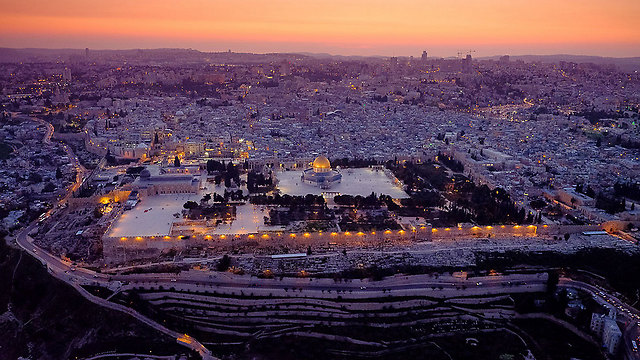Op-ed: Fifty years after its liberation, Jerusalem needs people who will live in it, rather than politicians who adorn themselves with the capital through dresses and protocols. It needs the government offices from Tel Aviv, budgets, secular residents and neighborhoods for young people, and it needs brave people who aren’t afraid to get to know the city.
Every year, on the eve of Jerusalem Day, I write about my love for the city and my disappointment with its political speakers. There is no other city in the world with such a discrepancy between words and action, between everyday Jerusalem and celestial Jerusalem, between holy and mundane. The city which was united thanks to the paratroopers, but is slowly splitting because of the politicians.
Jerusalem’s advantage is the romance it creates among its lovers. Whoever falls in love with Jerusalem cannot be weaned. The stones, the market, the holy sites and the mixture of religions and streams. In Jerusalem, religious radicalization and pluralism grow. So do philosophy and conservatism. It is the goal and the excuse for almost everything that takes place here.
Love for people and for stones is a dangerous business: When there is an exaggerated dosage, the famous syndrome arrives. In political eyes, one stops seeing reality. I am one of its lovers. If there is a city worth living in, whose lovers are not allowed to learn about, it’s Jerusalem.

We have lost Jerusalem in the international arena. This is a truth which should be told even when we mark 50 years since the war. The Temple Mount is in the hands of the Waqf, and the Israeli government—instead of doing—is passionately speaking about its importance. A large part of the Jewish neighborhoods in east and north Jerusalem are under an unofficial freeze order. One time its former US President Barack Obama, now it’s Donald Trump, and another will follow. The city wraps itself in light on its holiday, but throughout the rest of the year most Israelis stay away. And now the Western Wall—the most famous religious symbol in modern Judaism—has turned into unclear mumbling in the Trump administration.
Half a year ago, I was approached by Oxford University to participate in a literary debate from the right and from the left about Jerusalem. An exchange of letters ahead of the 50th anniversary of the city’s reunification. In my opinion, there is no chance to divide the city. Many of the neighborhoods are mixed. Jews live on the Mount of Olives, in Shimon Hatzadik neighborhood and in the City of David. Arabs from east Jerusalem work in the western part of the city. There is no surgeon who will manage to separate between these neighborhoods. There is no surgeon capable of connecting what had been disconnected. My literary rival in Oxford sees Jerusalem as a move towards peace.
Anyone who knows Jerusalem thoroughly knows that there are actually three different parts: The western part of the city—with the veteran, well-kept neighborhoods; the eastern part of the city—with islands of governance, turning a blind eye to the Palestinian Authority’s involvement: A separate electric company and legal and educational systems which belong to Ramallah; and the third part—the neighborhoods beyond the fence—areas that an Israeli cannot, if only due the fact that there is a sign forbidding him to do so. Areas with no government or responsibility. Places where each person does what he feels like. Whoever has construction material builds tall buildings, and whoever has a weapon walks around with it. Areas which politicians must not talk about, so as not to be forced to deal and decide on their future.
Most Israelis are unfamiliar with this division. I look into it when I address an audience. They know Jerusalem from songs and from election campaign declarations. They know it from pictures and from official publications, from the dress on the red carpet in Cannes or from the piece of jewelry that Rabbi Akiva gave his wife Rachel. Not through their feet. Their Jerusalem is reduced to the first part—the western part of the city. The Knesset, the Supreme Court and the Western Wall. Sometimes, they reach the Old City or the Church of All Nations at Gethsemane. The brave ones go up to the Seven Arches Hotel to the most beautiful observation post in Israel. That’s where it ends.
Unfortunately, even Jerusalem Day has turned into Religious Zionism’s holiday. Most Israelis don’t come near, don’t know, don’t visit. In a quiz that I once conducted for Army Radio, it turned out the many Knesset members don’t either, including fervent speakers for Jerusalem. Now let’s consider whether the reality of the city can be translated to the Brits from Oxford or to Trump, who excels without knowing, whether the discrepancy between words and ancient stones can be explained.
Fifty years after its liberation, Jerusalem needs people who will live in it—not politicians who adorn themselves with the city through dresses and protocols. It needs the government offices from Tel Aviv. It needs budgets that will turn the eastern side of the city into the west. It needs seculars and neighborhoods for young people in the east and in the west. It needs brave people who won’t be afraid to get to know what is happening in the city.
As reported by Ynetnews
